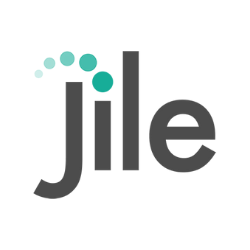Using Kanban in Your Daily Life

Staying focused is more challenging today than ever before. There are a thousand sources of distraction. We always tell ourselves that it’s time to be more productive. Unfortunately, it is impossible to do so without using a proper system. Luckily for us, there’s something that’s already out there. All we need to do is find a way to adapt it to our needs. This is where Kanban comes in.
What is Kanban?
Toyota designed Kanban in the 1940s to reduce the disparity between inventory levels and the actual consumption of materials. It is a framework that allows its users to visualize work and enhance collaboration among team members. The purpose of Kanban was to handle resources and distribute the workload optimally.
Everywhere, teams started to use physical Kanban boards to structure and optimize workflows across teams and departments ever since. Today, we use virtual boards to transcend geographical limitations, boost collaboration, and track progress for projects.
The Kanban system was designed to handle manufacturing processes. But this does not mean we cannot use it personally to stay organized. The fundamentals of Kanban are so simple that everyone can use it to their advantage.
What is Personal Kanban?
Although organizations are the predominant users of Kanban, it is also handy for individuals that need to organize their daily tasks to create productive routines. Personal Kanban is a system that promotes balance by minimizing work in progress (WIP). Anyone who has a lot on their plate regardless of age or occupation will find Kanban extremely useful. Some Kanban examples in daily life are:
- Students who need to optimize their time to handle assignments.
- Workshops that have to track work progress.
- Anyone at home who needs to manage and organize tasks.
Using a Kanban Board
Visual representations of tasks and workflows can seem intimidating on the surface. Here are a few steps to guide you through designing your own Kanban board.
You can divide a whiteboard or a blank sheet into three sections vertically to categorize your tasks. One for 'to do', the second for 'doing' and the third for 'done'.
Add items to each column using a pen, marker, or post-it notes. Remember that the main idea behind Kanban is to limit your work in progress and maximize productivity. This means you should not add more than three or four tasks under the “doing” column at a time.
You can move finished tasks to the “done” column. Seeing all the work you’ve finished helps you stay motivated and fulfilled. It is as simple as that. The only challenge is to use the system consistently to reap its advantages.
Benefits of Personal Kanban
Now that we’ve understood how to use a Kanban board, let’s explore its benefits:
Organizing – You can prioritize your work more effectively through visual representation. There’s a lesser chance of being led astray by anything that pops up during the day.
Prevent frivolous multitasking – Having your fingers in too many pies means that no piece of work gets total, undivided attention. This hampers the quality of your work and increases room for error. Kanban promotes the idea of sticking to one task at a time and staying focused.
Improved time management – Consistently using Kanban develops efficiency and fosters the habit of sticking to a time frame and meeting deadlines.
Learning how to prioritize – Arranging tasks in order of priority helps you improve the quality of work. Methodical practices like this expand your bandwidth and enhance your ability to concentrate.
Self-development – Once you are in the habit of using a Kanban board, you will instinctually start enhancing your efficiency and productivity. You will experience an improvement in your ability to move a task from “to-do” to “done” once you have got the hang of it.
Principles of Kanban
There are four principles that Kanban follows, which are:
Workflow visualization – Kanban does not enlist any particular method of handling workflows, only that all the work must be visually represented.
Limit work in progress – The purpose behind using Kanban is to move tasks across the three columns in a constant flow. A work in progress limit is set to prevent stagnation and accumulation. Setting limits promotes the prioritization of important tasks.
Focus on flow – This principle reiterates that there has to be movement from one operation to the next. All the processes should be on display. Interruptions in the flow must be solved at the earliest.
Continuous improvement – Kanban is all about scaling up because we can never reach maximum efficiency. There’s always room to do something better, and it is the effort that counts.
Practical Uses of Kanban
Here are a few Kanban examples in daily life to give you a clearer idea of how to use it:
Creating a daily to-do list – You can use a Kanban board to list all your chores and tasks for the day. Schedule when you have to carry them out and prioritize the essentials.
Manage multiple projects at once – While one of the rules of Kanban is to limit your work in progress, you can manage multiple projects at the same time once you have clearly understood your bandwidth.
Work with a remote team – A Kanban board helps the entire team understand the scope of any given project or task at hand. The entire plan of action is broken down into smaller, palatable tasks. These are then assigned to specific team members.
Plan an event – This is a great example of Kanban in daily life as there are so many threads that have to come together. It would be impossible to run any event smoothly without a proper method to plan and organize everything.
Using Jile as a Personal Kanban Tool
Once you understand how to use Kanban, you will realize how simple yet effective it is. The Kanban Project and Product Management Software from Jile allows you to level up your routine by organizing, managing and tracking tasks for your personal use. Check out our www.jile.io to learn more.
Thanks for subscribing to our latest blogs, thought leadership and other product updates!
Read our Privacy Notice to know more. You can opt-out of all communications anytime.
